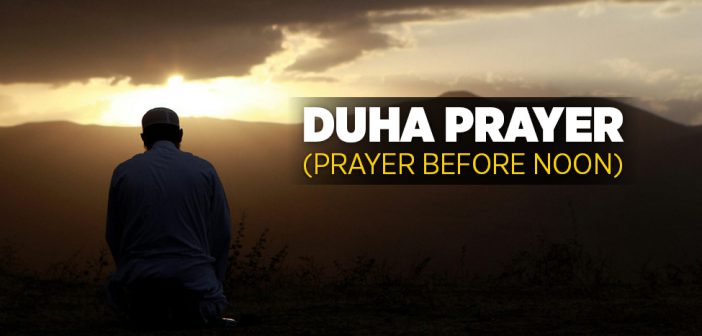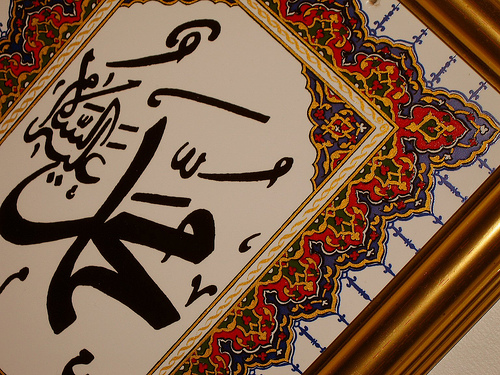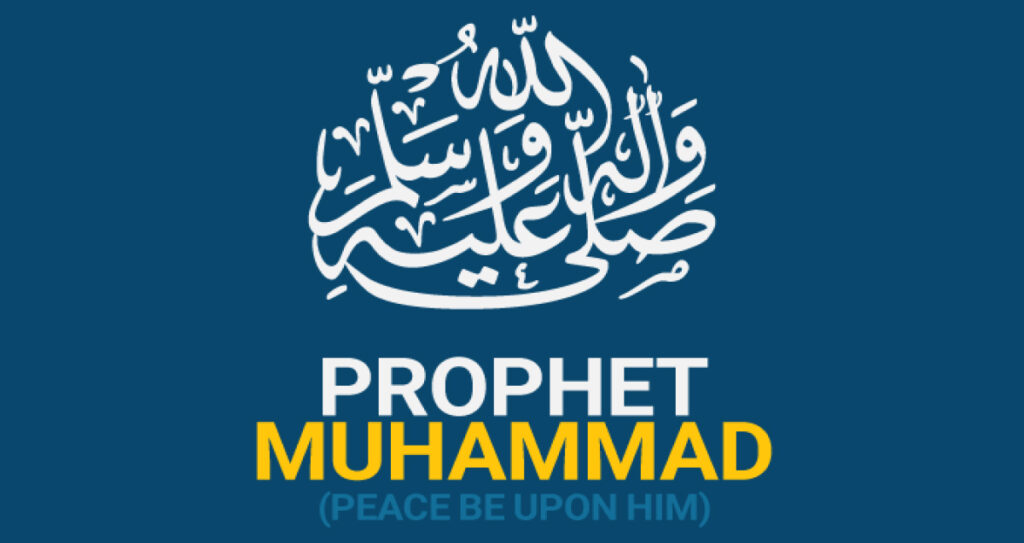
salaatut duha (chaast prayers)
According to the fuqahaa (jurists) and muhadditheen (hadith scholars) the time for salaatut duha is from the morning after the makruh time passes till zawaal.
But according to the sufis these are two separate prayers, one is called ish-raaq and the other duha (chaast) prayers.
The sufis substantiate their view from the previous hadith of Sayyidina’Ali Radiyallahu ‘Anhu and other narrations.
The ‘ulama differ on salaatut duha. The commentators on hadith have written eight ma-dhaa-hib of the ‘ulama.
According to Imaam Abu Hanifah this salaah is rnustabab.
The ‘ulama have written that many ahaadith have been narrated regarding this salaah.
In the kitaab ‘Awjaz’ narrations of twenty five Sahaabah Radiyallahu ‘Anhum have been mentioned.
Besides these there are many others.
It has been reported in a hadith that a human has three hundred and sixty joints.
For every joint a daily sadaqah is necessary, thanking Allah Ta’aala that He has kept it safely in its proper condition.
Look at the joints of the finger for instance.
If it dislocates’ the finger becomes useless. Instead of remaining soft, it becomes hardened.
Nor will the finger move, nor can anything be held, picked up.
Thus Sayyidina Rasulullah Sallallahu’Alayhi Wasallam counted the sadaqahs, that to utter once subhanallaah, is also a type of sadaqah.
He then said.. “The two rak’ahs of chast is a complete sadaqah on behalf of the three hundred and sixty joints (of the body)”.
The author has mentioned eight ahaadith in this chapter.
Hadith Number 1.

Mu’aadhah Radiyallahu ‘Anha says: “I asked ‘Aayeshah, ‘Did Rasulullah Sallallahu’Alayhi
Wasallam perform the salaatut duha (chaast prayers) ?” She replied: “Yes, he performed four
rak’ahs (the least), and added to it the amount Allah Ta’aala willed”.
Commentary
Salaatut duha is a nafl devotion, therefore at least two rak’ahs could be performed.
More could be added to it, if the heart wills, which has no end.
It has been ascertained that Sayyidina Rasulullah Sallallahu ‘Alayhi Wasallam performed up to twelve rakahs.
Some are of the opinion, that it has been ascertained that Sayyidina Rasulullah Sallallahu ‘Alayhi Wasallam only performed eight rak’ahs.
But one has certainly been encouraged in a narration to perform up to twelve rak’ahs.
Hadith Number 2.
Anas Radiyallahu ‘Anhu reports: “Rasulullah Sallallahu ‘Alayhi Wasallam performed six rak’ahs of the salaatut duha”.
Commentary
Due to different times, different number of rak’ahs have been narrated regarding the salaatut duha of Sayyidina Rasulullah Sallallahu ‘Alayhi Wasallam.
Therefore there will be no contradiction between them.
For this reason the ‘ulama have written that at least two rak’ahs, and it is best that eight or twelve rak’ahs be performed.
It has been narrated that Sayyidina Rasulullah Sallallahu ‘Alahi Wasallam usually performed eight rak’ahs.
Hadith Number 3.

‘Abdurrahmaan bin Abi Layla RA. (a Taabi’ee) reports: “None had given me the news that they had observed Rasulullah Sallallahu ‘Alayhi Wasallam perform the salaatut duhah besides Ummi Haani.
She said: Rasulullah Sallallahu ‘Alayhi Wasallam came to her house, the day Makkah was
conquered.
He performed ghusl (bath), then performed eight rak’ahs.
I did not observe Rasulullah Sallallahu ‘Alayhi Wasallam perform any salaah shorter than these, despite him performing every ruku’ and sajdah properly”‘.
(He did not perform the ruku’ and saidah haphazardly because the salaah was short).
Commentary
‘Abdurrahmaan RA. saying that none besides Sayyiditina Ummi Haani Radiyallahu ‘Anha
narrated this hadith, does not necessarily mean that no other Sahaabi knew about this.
In this chapter the narration of a few Sahaabah Radiyallahu ‘Anhum are mentioned. Ibn Jareer RA. says:
‘So many ahaadith have been narrated on salaatut duha that it reached the stage of tawaatur (unbroken chain of authentic narrators).
It has already been stated that nineteen Sahaabah Radiyallahu ‘Anhum narrated about this salaah.
It may be that those people did not have information that from whom did ‘Abdurrahmaan RA. investigate about this salaah.
There is no perplexity in this.
Some ‘ulama are of the opinion that the salaah mentioned in the hadith under discussion, was not the salaatut duha, but a prayer of thanks on the conquering of Makkah.
It was the practice of Sayyidina Rasulullah Sallallahu ‘Alayhi Wasallam when an event of happiness occurred, to perform salaatus shukr (prayer of thanksgiving).
It may also be possible that these eight rak’ahs included both the Salaatut duha and salaatus shukr.
hadith number 4

‘Abdullah bin Shaqeeq Radiyallahu ‘Anhu relates: “I enquired from ‘Aayeshah, that did
Rasulullah Sallallahu ‘Alayhi Wasallam perform the salaatut duha?”. She replied: “No he did not regularly perform it, but when he returned from a journey he performed it”.
Commentary
It was the noble habit of Sayyidina Rasulullah Sallallahu ‘Alayhi Wasallam that whenever he
returned to Madinah Munawwarah, he entered the city in the morning.
He first entered the masjid and performed nafl prayers.
This reply of Sayyiditina ‘Aayeshah Radiyallahu ‘Anha is the opposite of what was given in reply to a question of Sayyiditina Mu’aadhah Radiyallahu ‘Anha mentioned at the beginning of this chapter.
The ‘ulama-have therefore given different explanations to this. Imaam Bayhaqi has given this explanation, that in the hadith where it has been denied, the denial is of it not being performed regularly, which is not refuting that it was performed occasionally.
Meaning he did not perform it regularly.
In the hadith where the affirmative is mentioned, i.e.
that he performed this salaah, it will be taken to be performed more often.
Some of the ‘ulama have summed it up thus, that he only performed this salaah in the
masjid when he returned from a journey, otherwise at ordinary times he performed it in the
home.
In this hadith (under discussion) the object is the denial that this salaah was performed in
the masjid.
It was only performed in the masjid when he returned from a journey, as mentioned in the above hadith.
hadith number 5
‘Abu Sa’eed Al-Khudari Radiyallahu ‘Anhu relates: “Rasulullah Sallallahu ‘Alayhi Wasallam at
times performed the salaatut duha with such regularity, that we thought, he would not leave it.
At times he left it (fearing it might become fard or because of some advantage), till we thought he left it completely, and would not perform it again”.
Commentary
” Sayyidina Rasulullah Sallallahu ‘Alayhi Wasallam taking the ummah into consideration,
discontinued many devotions, of which there are many examples.
Sayyiditina ‘Aayeshah Radiyallahu ‘Anha says: ‘Sayyidina Rasulullah Sallallahu ‘Alayhi Wasallam very much liked to do a few things, but did not do it, fearing it would become fard on the ummah’.
hadith number 6
Abu Ayyub Ansaari Radiyallahu’Anhu says. “Rasulullah Sallallahu ‘Alayhi Wasallam always
performed four rak’ahs after the time of za’waal. I said: ‘O Messenger of Allah.
You give much importance to these four rak’ahs after the zawaal of the sun?’ Rasulullah Sallallahu ‘Alayhi Wasallam replied: ‘The doors of the skies open from the zawaal of the sun till the zuhr salaah is performed.
I desire that a good deed of mine reaches the skies at that time’. I asked: ‘Is there a
recital in every rak’ah?’ He replied: ‘Yes’. I enquired: ‘Should salaam be made at the end of two rak’ahs?’ Rasulullah Sallallahu ‘Alayhi Wasallam replied ‘No’ (Salaam should be made only at the end of four rak’ahs)”.
Commentary
The sufis name this salaah as salaatuz zawaal, and this is included in the mustahab prayers.
According to the majority of the muhadditheen this is the four sunan of zuhr salaah.
The reason being, besides the sunan of zuhr, there is no other nafl prayer after zawaal (midday) that Sayyidina Rasulullah Sallallahu ‘Alayhi Wasallam performed regularly.
In both cases according to both sayings this hadith and the ensuing one has no apparent relevance with the salaatut duha.
It is perplexing that Imaam Tirmidhi has mentioned this hadith in this chapter.
The mashaa-ikh have given a few explanations regarding this.
The first is that this was the ending time for chast, therefore it was naturally included here, and a separate chapter was not created.
Some are of the opinion that this is due to an error committed by the copier (calligrapher), which resulted in this being mentioned here.
Otherwise its original place was in the previous chapter.
It is said that in a few copies of this kitaab, this hadith is mentioned under the previous chapter, and not in this chapter.
Some have given other explanations too.
hadith number 7
‘Abdullah bin Saa-ib Radiyallahu’Anhu reports: “Rasulullah Sallallahu ‘Alayhi Wasallam performed four rak’ahs after zawaal before the zuhr salaah, and used to say: ‘The doors of the heavens open at this moment.
I like that a good deed of mine ascend there at this moment”‘.
Commentary
What deed can there be more pious and better than salaah, as this is the best among all devotions.
Sayyidina Rasulullah Sallallahu ‘Alayhi Wasallam has said: “The coolness of my eye is in
salaah”. In another hadith it is stated: “The one that performs salaah, is like one having a private conversation with Allah”.
hadith number 8
‘Ali Radiyallahu ‘Anhu used to perform four rak’ahs before zuhr and used to say: “Rasulullah
Sallallahu ‘Alayhi Wasallam also performed these four rak’ahs after zawaal, and recited long
verses therein”.
Commentary
Imaam Ghazaali has stated in his Ihya ‘Ulumid Deen, that it is desirable to recite the Surah
Baqarah in these four rak’ahs, or a similar surah which consists of more than a hundred aayaat, so that a sunnah of Sayyidina Rasulullah Sallallahu ‘Alayhi Wasallam could be practised in reciting a lengthy portion.
for prophets stories visit https://sunofislam.com/prophetsofgod/
for scientific miracles articles visit www.sunofislam.com
